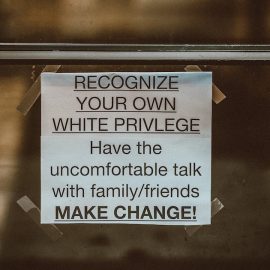

This article is an excerpt from the Shortform book guide to "Tiny Habits" by BJ Fogg. Shortform has the world's best summaries and analyses of books you should be reading.
Like this article? Sign up for a free trial here .
Are you trying to motivate a group of people to partake in an activity? Do you struggle to get all the group members on board?
If you’re trying to encourage group behavior, it’s important to realize that each individual in the group has their own levels of motivation. Some members of the group will join an activity right away while others will lack interest.
Continue on to learn how to manage group behavior.
Breaking Down Group Behaviors
Each individual in a group has their own personal Action Line for any particular behavior based on their distinctive configuration of motivation and ability. For any particular group behavior, we can identify four subgroups based on these motivation/ability combinations.
- Dolphins have high ability and high motivation.
- Turtles have low ability and high motivation.
- Crabs have high ability and low motivation.
- Clams have low ability and low motivation.
We can plot this in relation to the Action Line as follows.
[image] tinyhabits-crabsclams.jpg
Motivation is difficult to change. Therefore, to encourage a group behavior, focus on the Dolphins and Turtles. This can be a revelation for managers or group leaders who’ve been trying to target all four groups at once.
For example, imagine you’re trying to organize a walking challenge at work. You’ve sent out an email (the prompt), but have received few responses. What do you do?
- You don’t need to worry about the Dolphins—they’ve already replied to the prompt and are preparing enthusiastically for the challenge.
- Focus on the Turtles. How can you make the behavior easier for them?
- Leave the Crabs and the Clams for now. Maybe their motivation levels will increase when they see their colleagues preparing, or maybe they’ll be more motivated to participate in an alternative group event, such as a food drive.
The Queen B Solution
This is a high-level solution for situations in which it’s not possible to go back and revisit your Swarm of Bs (behaviors): the behavior itself can’t be changed. The only option is to manipulate motivation.
Consider the walking challenge. If it’s very important to include the Crabs and Clams, think of some different ways you could increase their motivation. Can you offer an incentive, such as free sports gear, free movie tickets, or the chance to network with high-ranked managers? Can you link the challenge to a donation to a charity that’s important to your group members?
Troubleshooting Behaviors in Other People
When trying to change a group’s behavior, our tendency is to focus on motivation first.
Flip this. Use the following sequence to troubleshoot behaviors in others.
- Check the prompt. Ask them: Do you have an adequate reminder?
- If the behavior doesn’t change, check ability. Ask them: What’s making this difficult for you?
- If the behavior still doesn’t change, consider motivation. Explain why the behavior is important. Consider introducing rewards or punishments (if appropriate).
For example, your employees consistently arrive late to a meeting.
- Check the prompt: Do they have an appropriately timed reminder? If not, set up automatic reminders, or remind them yourself.
- Check ability: What is making it difficult for them to arrive on time? Do they have another meeting scheduled immediately beforehand? If so, shift the meeting to a different timeslot.
- Check motivation: Is there something unappealing about the meeting itself? Consider tailored ways to increase motivation.

———End of Preview———
Like what you just read? Read the rest of the world's best book summary and analysis of BJ Fogg's "Tiny Habits" at Shortform .
Here's what you'll find in our full Tiny Habits summary :
- How you can successfully create new habits that stick
- Why you don't need motivation, just science
- Why even flossing one tooth should be considered a victory






